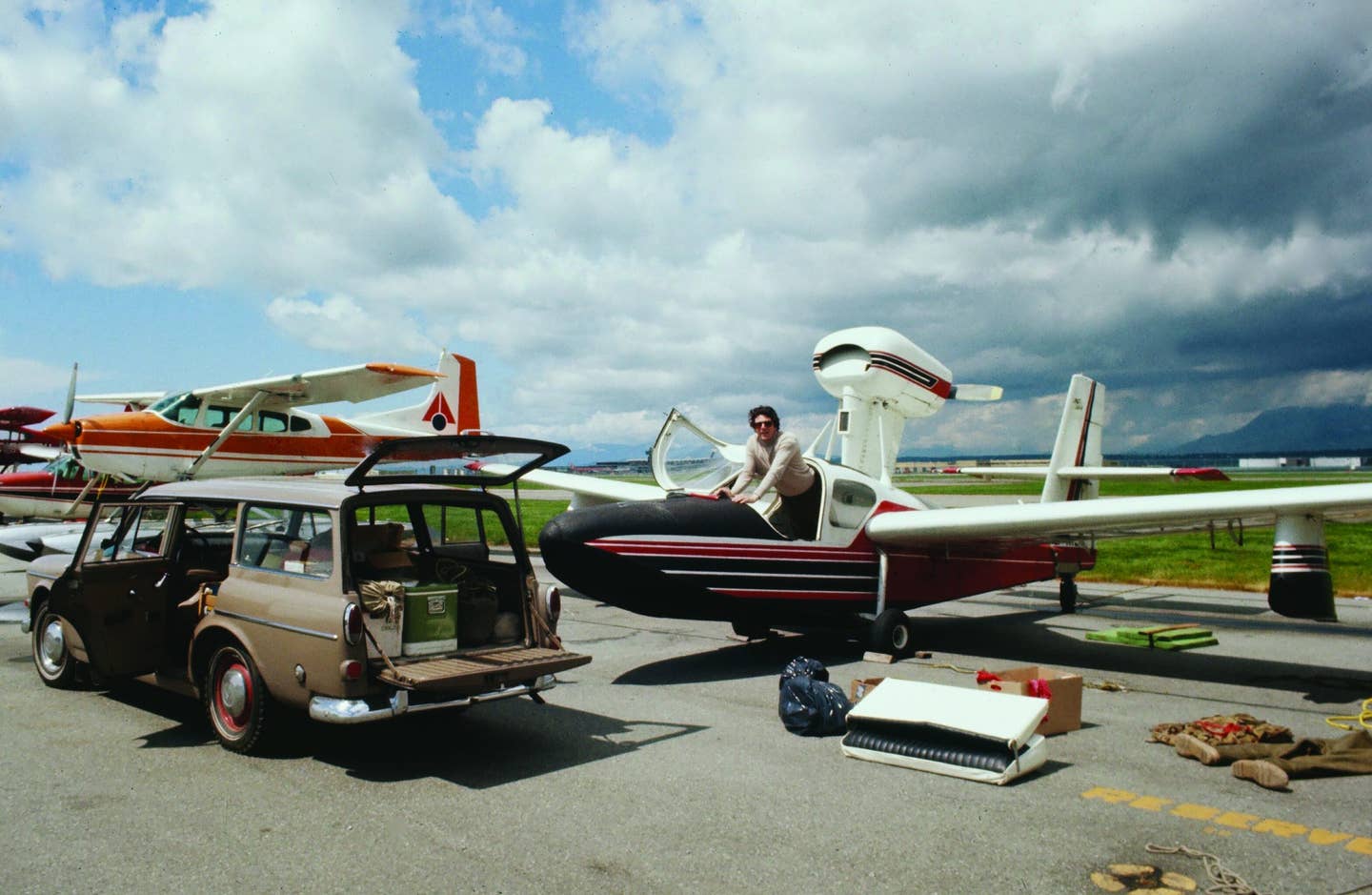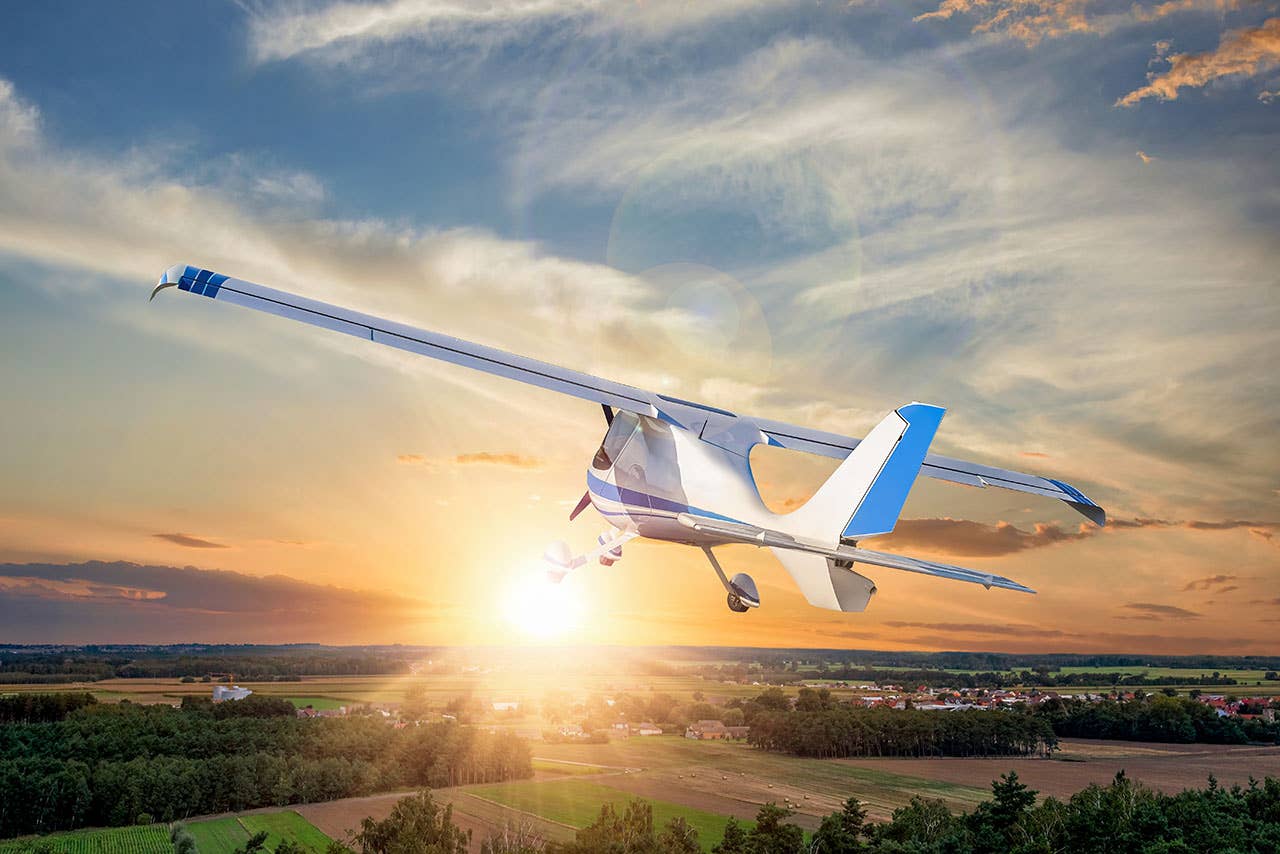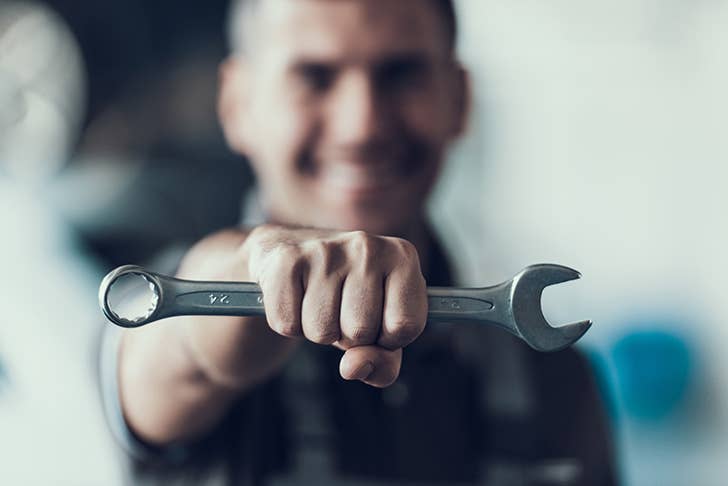Partnership Aircraft
With careful planning, shared ownership could be the best way to go
 Would an aircraft partnership save you money or allow you to fly a bigger and better airplane for less than you're spending now?
Would an aircraft partnership save you money or allow you to fly a bigger and better airplane for less than you're spending now?
A partnership, or shared aircraft ownership, is one of the oldest and sometimes most practical forms of owning an airplane. An aircraft partnership is a lot like a marriage: the good ones are heaven, and the bad ones are a nightmare. A few simple steps up front can make this arrangement a rewarding experience for the pilots whose flying needs fit into the joint-ownership framework. If you can't or don't want to own an entire airplane by yourself, this fast-growing segment of aviation can be the ticket to flying on your own terms.
Shared ownership is more common than most pilots realize and has been around for a very long time (we can assume that the world's first airplane was owned jointly by Wilbur and Orville). It includes large and small airplanes; the very rich and average Joes; and formal, professional management on new airplanes or just good buddies sharing a used Cherokee. Most of the new aircraft manufacturers have a factory- sponsored program, but some partnerships are actually formed on the golf course, in the airport coffee shop, or at your office or place of employment.
The underlying benefits of shared ownership are really for those pilots or corporations that need an airplane for just a small amount of time---not enough to warrant full ownership costs, but enough to need more reliable access than what rentals or charters can provide. The genesis of today's largest fractional jet program, NetJets, which has spawned similar programs for piston singles, goes back to the 1950s with a company called Beckett Aviation. Mr. Beckett realized that many companies in the upper Midwest industrial belt (Ohio, Michigan, Illinois) needed prestigious, readily available air transportation, but didn't want the hassles of hiring pilots, keeping a hangar or understanding airplane maintenance issues. To solve this, he sold these large and small industrial titans "shares" in a brand-new Twin Beech or Aero Commander, the prestigious corporate airplane of the day. For a fee, Mr. Beckett's company would hangar, maintain and crew the airplane for the group of owners. The program worked well, and the partners generally traded up to turboprops and eventually jets in the early 1960s. The idea of corporate aviation proved so valuable that many of Mr. Beckett's customers went on to buy their own airplane, and the program somewhat withered away because of its own success.
The major benefit of successful aircraft joint-ownership programs is the cost savings to the partners. Hangar, insurance, maintenance and purchase price are shared instead of all coming out of one pilot's pocket. In modern, professionally managed operations---e.g., PlaneSmart!, OurPLANE and AirShares Elite---there are added benefits, such as predictable costs and no hassles of maintenance, storage and handling. The fractional owners pay a bit more for the convenience and time savings of having someone else "baby-sit" the airplane. The fractional owner just shows up and flies the airplane. The cost structure isn't onerous: depending on the vendor, a 1â8-share in a new Cirrus is approximately $75,000, the monthly fee is in the range of $800 per month, and the hourly rate approximates the cost of fuel and engine reserves. The same new Cirrus, if purchased outright, would run about $500,000; the monthly upkeep expenses would run about $1,800 per month; and the hourly figure would remain about the same as the fractional program. The benefit of being a solo owner is that it's all yours, it's always available and you have unlimited use of your airplane. Under the fractional program, you're generally capped at about 75 hours per year. You can buy more hours, but the cost-effectiveness starts disappearing at about 125 hours per year. Beyond 125 hours or so, it's cheaper to own it all.
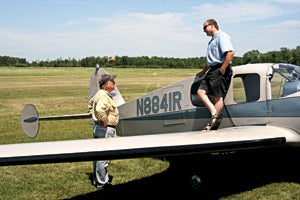 |
| Partnership agreements should clearly define how a partner can expunge a problematic partner, should issues arise. |
The other downside to joint or shared ownership is that your airplane is being flown by a lot of strangers who may or may not share your views of proper procedures and your level of overall care. Also, it's rare, but there can be scheduling conflicts and lack of availability on short-term notice. The fractional programs generally strive to juggle everyone's needs and make everything work, but there can be times when you're flying on the airlines.
Many of today's fractional owners, after seeing the utility of aircraft ownership, are taking the next big step to individual ownership after getting their feet wet on a shared basis.
Why are some partnerships great and others a disaster?
Successful aircraft partnerships all seem to have several common underlying elements, and the unsuccessful, nightmare aircraft partnerships share some common underlying weaknesses. By examining these, you can steer yourself toward a pleasant, rewarding partial-ownership experience. If you're in a partnership that isn't working, maybe some of these steps will help fix the arrangement.
There are many common elements of a successful aircraft partnership. Few aircraft partnerships are exactly alike, they seem to be crafted to fit the specific needs of the parties, but the most important idea among the successful ones is that they're run as a business and not a hobby. Ideally, someone outside the partnership, like a CPA, keeps track of the expenses and accounting. The partnership is kept on a sound financial footing, with engine and maintenance reserves actually being deposited into a bank account. There's a formal partnership agreement that, most importantly, outlines an exit strategy for a partner. Partners are humans who have financial reverses, remarry to spouses who don't like airplanes, have disagreements with the other partners, move away or pass away. A partnership agreement should clearly spell out how one partner can exit or how the other partners can fairly and equitably expunge a problematic partner.
A successful partnership doesn't consist of partners who are struggling to buy and fly an airplane that's out of their financial means; rather, it includes partners who can easily and comfortably afford the airplane, almost on their own, but choose not to.
Successful shared ownership should have an operating agreement and a set of rules whereby the obvious decisions are already made, such as the amount of insurance carried, the minimum pilot qualifications for members, who is responsible for maintenance, each member's duties of caring for the aircraft and the scheduling protocol.
The best aircraft partners are the ones who think alike on all the big decisions of operating the airplane, such as maintenance, scheduling, finances, care and operation, and upgrades.
| $500-Per-Month Airplane "Gotchas" |
|
So, you've met your partners, everyone is in agreement on an airplane and its care and operation, the partnership agreement has been signed, and you have your insurance quote. The last item is the m-o-n-e-y. Your first option is to pay cash, but some of the partners may not be able to do so. It's awkward if some partners pay cash and others finance the airplane, because the whole airplane will be taken as collateral for the note. The partners who pay cash would be pledging their share of the airplane to the note for the sake of the other partners. It may be simpler for the whole group to take out a loan for the airplane; then, everyone's equity is equally at risk. The good news today is that aircraft financing is still readily available. The present credit crunch from the fallout of subprime mortgages hasn't affected aircraft financing. The two keys to getting an airplane loan are showing good credit and the ability to comfortably make the payments. For a partnership loan, each partner will need to submit a credit application and two years' tax returns, and each partner will be required to sign on the loan, with joint and several liability. This means that in the event of a default, the bank can look to any one partner for the entire loan balance. Strong partners need to understand that they might have to carry weak partners in the event of a default, but that's one of the give-and-takes of a partnership. Banks generally want to see a minimum credit score of 650 or better. If you have a low score, but there are very valid reasons for it and you're showing good income, you may still be able to get the loan. Normally, the minimum airplane loan is $50,000. Expect to put 10% to 20% down with a rate of about 7.5%. Some loans are 15-year terms with a balloon at five or seven years (the payments are calculated on a 15-year amortization schedule, but the entire loan is due in five or seven years); other loans can be obtained with a fixed 15-year term. I generally recommend a long-term, fixed-rate note. According to Bob Howe at Dorr Aviation and Kathy Sterling, an independent aircraft loan broker, there are a number of different options in aircraft financing right now. They can match your needs and abilities with a bank that has a program to best fit your specific requirements. Their fee is paid by the bank, because it saves the banks a huge marketing overhead, and their services save you a lot of time and trouble searching out a bank that can deal with your specific needs. Sound good? Act now. With plentiful financing (for good credit), a good airplane and good partners, why delay? A 10% down payment spread out among five partners means you'll soon be at 6,000 feet, flying a great airplane with only about 2% out-of-pocket cash up-front. On a $50,000 airplane, as little as a $1,000 down payment gets you (with partners) a pretty decent flying machine. See ya at 6,000 feet!flying your airplane. |
Steve and Gary jointly own a Cessna 210. They have each owned much larger airplanes, but in slow business periods, the bigger airplanes weren't utilized much and became a financial drain and had to be sold. Their flying patterns indicated that 95% of both of their trips were in a 300-mile radius. And each of them would probably fly 50 hours per year. Gary needed to fly during the week for quick business trips, and Steve only flew on the weekends to golf outings. According to Steve, "We decided to buy a nice Turbo 210 together and ’see' if joint ownership would be the answer. We agreed that top-notch maintenance was a priority and that state-of-the-art avionics would be the norm, and that bills would be paid on time with adequate reserves ’in the bank' to cover unexpected maintenance issues." They signed a formal partnership memo that spelled everything out. "We even signed a ’buy-sell agreement' whereby one partner could buy out the other or get bought-out if things didn't work out," Steve added. Gary sometimes fantasizes about buying a CJ-1 Citation, and Steve admits to occasionally thinking about a Navajo or Cessna 340A, but then they both ask themselves "Why?" By splitting the cost of the annuals and the hangar and insurance, the expenses are hardly noticeable, according to the partners.
Now, eight years later, through good and bad economic times, the Turbo 210 partnership is working fine, and both parties intend to keep the airplane forever.
What doesn't work, and what changes a joy into a problem, is a partnership that's quickly thrown together on emotion, with a lack of forethought regarding the financial side of the deal and the expectations of each partner's usage and care of the airplane. Partners who can't really afford the airplane sometimes band together, creating a poorly capitalized endeavor that comes apart at the first problem. Partners can have unexpected problems and so can airplanes. A partnership that's barely staying afloat and has no ability to buy out a financially troubled or problematic partner, or cover an unexpected mechanical problem, can create a bad situation for everyone involved.
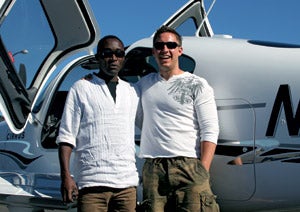 |
| Pilots who can agree on decisions involving maintenance, scheduling and finances will make the best partners. |
Bill saw an ad in his newspaper for a 1â3-share of a really nice Cessna T-182RG. He had sold his fixed-gear 182 many years ago because of the cash requirements of his growing business and his lack of time to fly. He had window-shopped the local Cessna dealer for a new 182, and was somewhat surprised at the sticker price of a new glass-panel 182 ($350,000). The ad offered 1â3 of a nicely equipped turbocharged, retractable 182RG for about $45,000. He looked at the airplane and liked it. He liked the fact that the radios were late-generation King and he wouldn't have to learn the new glass-panel package. He was doing okay financially, and he was eager to get back into flying, so he quickly wrote a check for the $45,000 and began getting back into flying. The prepurchase meetings with the existing two partners amounted to just a few quick lunches at the airport coffee shop. The existing owners already had a mechanic who could do "all the work at really great prices and save everyone a ton of money."
Bill was as meticulous in his flying as he was in his office and home, where things were neat, bills were paid on time and he had a healthy respect for maintaining machinery (from his family-farm roots in Missouri), but as he points out, "after about six months, I started noticing that the airplane was usually dirty and had stray food wrappers under the seats when I went to fly. At first, it wasn't a big deal and I enjoyed washing the airplane on Saturday afternoons."
On one trip, he was running late and in a hurry, and his preflight showed the fuel tanks were empty. Somewhat annoyed, he called the FBO to send a fuel truck. The young lady told him that they couldn't send a truck and would he mind coming to the office to see the FBO manager? Bill's good nature was quickly evaporating. The young FBO manager informed Bill, face-to-face, that he was sorry, but the airplane couldn't be serviced any further until the $1,825 in back fuel charges were taken care of. Bill called Ted, his partner who usually handled the money side of things, but he couldn't be reached. He called the other partner who said that he hadn't flown in a while but assumed Ted was taking care of it. Bill put the entire past-due fuel bill on his credit card so he could get fueled and underway, thinking that he would reconcile the error with the partner who took care of the accounting later.
On the return trip, Bill noticed the left mag was running rough and it had reached the maximum limit of tolerance for a mag drop, so he asked the FBO to look at it because he had another trip in two days. The maintenance manager said they could do it, but did Bill want to go ahead and get the annual done, since it expired five months ago?
"I was flying a dirty airplane that wasn't being carefully maintained, without a current annual inspection, which was a clear FAA violation and a sure way to have an insurance carrier deny a claim had there been an accident. In my book, this wasn't acceptable any longer," Bill confided. After a heated confrontation with his partners, Bill learned that the FBO fuel bill hadn't been paid because there wasn't enough money in the airplane account to pay for it as two cylinders had to be replaced on the last annual, and the unexpected expense ate up all the fuel money. Ted was waiting for a good-buddy mechanic to finish his vacation and get back to work and schedule their annual, but Ted had simply lost track of time. To the buttoned-down Bill, this wasn't working. "I told the others I wanted to get out of the partnership and would they please buy me out?" This didn't work because Ted was retiring in 18 months and didn't want to take on any more expense or debt, so he couldn't. Roger, the other partner, was in a messy divorce, and everything was tied up financially, so he couldn't buy Bill out. Bill then offered to buy out Ted and Roger, but Ted really didn't want to sell because he was looking forward to doing a little flying after he retired. Bill tried, but gave up trying to deal with Roger, his wife and her attorney, who weren't in any hurry to discuss an airplane. So, Bill now owned 1â3 of a poorly maintained, underfunded situation with no clear-cut way to extricate himself from the deal. When I last checked, Bill was trying to find someone, anyone, who was comfortable with the laid-back style of Ted and Roger.
This is an extreme example, but it's not uncommon. It's easily prevented by doing some basic paperwork up front, including a written partnership agreement covering how to exit the deal, how the airplane will be maintained, who handles the money, who schedules the maintenance and how to handle shortfalls.
To be sure, there are probably many more successful aircraft partnerships than horror-story partnerships, and the partnership agreement is, in many cases, the key to which type yours may turn out to be.
Whether you're just starting your flying career and want to see if flying will actually be a part of your life before taking the plunge to buy a whole airplane, or you're winding up your flying career and don't want to be without an airplane altogether but don't feel justified in carrying the ball by yourself, it's worth exploring the idea of a shared ownership or partnership to see if it's the best method for you to own an airplane.
Find a group who thinks as you do on the important issues, shares your goals and expectations, and puts it all in writing. Follow these suggestions, and hopefully, you'll have a very productive and positive airplane partnership experience. Whether you're buying into a Cessna 150 or a new Gulfstream V, what can be better than flying your dream airplane and saving money?

Subscribe to Our Newsletter
Get the latest Plane & Pilot Magazine stories delivered directly to your inbox


